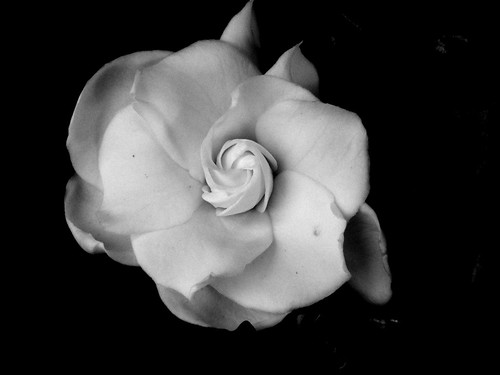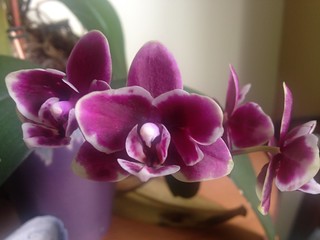Chanel's Gardénia

Chanel's Gardénia was never really meant to be a realistic gardenia, but an olfactory representation of the designer's favourite flower, the (scentless) white camellia. Like Narcisse Noir, this abstract floral has an orange-blossom-like quality at its core, but it's not nearly as dark. At the same time, it does not have the bright clarity orange blossom usually creates. Instead, it plays up the methyl anthranilate, and fleshes it out with a muted, slightly mushroomy-green tuberose back note, waxy aldehydes and powdery violet-rose accord that bring to mind lipstick, scented candles and makeup. As it dries down, it becomes less sweet and smooth and a little dusty-woody, like cedar wood saw dust. Perhaps there is also a hint of cedar moss as a fixative as well, some vanilla and musk. All around there is an incense feel in the air that accompanies the abstract floral frontline. But all in all, it is quite linear and very well blended that the character somehow maintains itself despite these changes.
If you're expecting a luscious, larger-than-life tuberose-gardenia you'll be disappointed. This is demure by comparison, and has more fruity floral character than a big white floral as this name would suggest to anyone familiar with the flower. It's very well-behaved, staying close to the skin but at the same time has depth and a harmonious, even if not complex evolution. This is the perfume extrait I am referring to, which I believe was discontinued when the Les Exclusifs were launched. Which is too bad, because it was replaced by a thin and pale shadow of its former self, and a very short lived experience. And I hear that even this older version I have may very likely not be the original composed by Ernest Beaux. Read more on Perfume Shrine about how Gardénia has changed and evolved (or devolved...) in different eras since it launched in 1924. To me it smells more like a Caron than a Chanel - it has warmth and sensuality, while most of the Chanels are generally aloof and have a cool manner about them.
Nevertheless, it will still satisfy elegant ladies in beige linen suits or cream satin gowns, or those who enjoy an unusual floral with a retro yet not old-fashioned feel. It is elegant, understated and the aldehydes are not terribly dominant (as they are in No. 22, for example). The new version that replaces it is louder at first, with a more identifiable fresh flowers of tuberose-gardenia with their intense headiness and almost realistically dewy gardenia petals, but just for a few minutes. It is so light and sheer that it disappears very quickly and makes room for an accord that is quite true to the core of the original composition - incense, wax, lipstick rose-violets - just a tasting menu of it all, not a full fledged Gardénia.
Top notes: (Modern EDT version has green-dewy gardenia top notes, the vintage I have has no apparent top notes).
Heart notes: Orange Blossom, Tuberose, Rose, Violet
Base notes: Incense, Cedarwood, Vanilla, Musk


